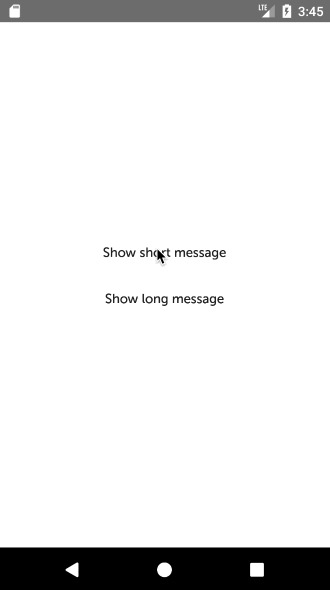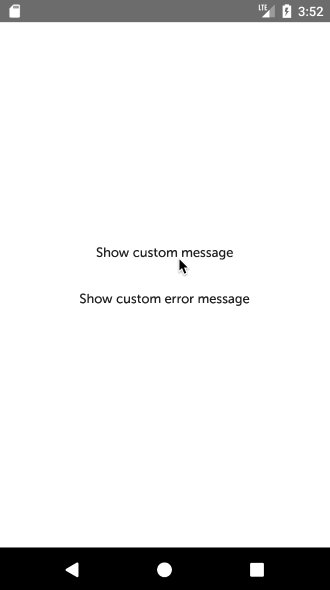0.3.0 • Published 6 years ago
react-native-messages v0.3.0
react-native-messages
React Native notification-like messages

Features
- Customizable message component
- Fast native driver animations
- Auto-hide current message to display a next one
- Robust implementation, used in production code
Installation
$ npm install react-native-messagesUsage
- Add
<MessageBar/>to the top of your view hierarchy, as a last component. If you are usingreact-navigation, root navigator should be in place of<App/>. Root view should haveflex: 1:
import { MessageBar } from 'react-native-messages';
<View style={{ flex: 1 }}>
<App/>
<MessageBar/>
<View>- Call
showMessagein any other component:
import { showMessage } from 'react-native-messages';
<Button onPress={() => showMessage('You are awesome!')}/>Config
| Prop | Type | Default |
|---|---|---|
| messageComponent | Component | Default message component |
| duration | Number | 1000 |
| slideAnimationOffset | Number | 40 |
| showAnimationDuration | Number | 255 |
| hideAnimationDuration | Number | 255 |
| closeOnSwipe | Boolean | true |
You can add custom config as a second argument to showMessage call to configure individual messages. E.g. showMessage('You are awesome!', { duration: 3000 }).
Custom message component
Default message will receive only string, but you can implement your own message component to work with any other objects e.g Error instances. Your message component will also be passed a hideMessage prop. Simply call hideMessage() to hide the notification.
function Message({ message, hideMessage }) {
if (message instanceof Error) {
// return error-styled message
} else {
// return normal message
}
}
<MessageBar messageComponent={Message}/>
<Button onPress={() => showMessage(new Error('Boom!'))}/>
Demo
$ git clone git@github.com:Qlean/react-native-messages.git
$ cd react-native-messages/demo
$ npm install
$ npm start
$ react-native run-android # assuming Android emulator is running: https://facebook.github.io/react-native/docs/getting-started.html#installing-dependenciesContributing
Same as demo. Run npm install in root directory to install ESLint.